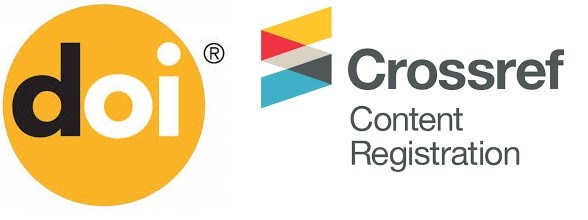Menggali Potensi Arabic Keyboard untuk Pembelajaran Menulis Arab / Maharah Kitabah dengan Pendekatan Mnemonic di UII Darullughah Wadda’wah
DOI:
https://doi.org/10.32699/liar.v8i2.7959Kata Kunci:
Papan Ketik Arab, Mnemonic, Keterampilan Menulis.Abstrak
Dalam era modern, istilah "buta huruf" tidak lagi merujuk pada ketidakmampuan untuk membaca dan menulis; sebaliknya, istilah ini sekarang merujuk kepada mereka yang tidak mampu mengoperasikan komputer, terutama keterampilan dasar mengetik. Namun, banyak siswa masih mengalami kesulitan saat mengetik dengan menggunakan papan ketik Arab. Penelitian ini bertujuan untuk menggali efektivitas penggunaan Papan Ketik Arab dengan pendekatan mnemonic untuk meningkatkan keterampilan menulis bahasa Arab di UII Darullughah Wadda’wah. Berdasarkan pengalaman bertahun-tahun dalam menggunakan dan mengajarkan Papan Ketik Arab, penelitian ini menunjukkan bahwa siswa dapat menguasai keterampilan dasar mengetik dalam satu hingga tiga hari dengan tiga sesi, sementara kelancaran mengetik dapat dicapai dalam waktu seminggu atau lebih. Penelitian ini diharapkan menghasilkan penulis yang terampil dalam menggunakan Papan Ketik Arab, sehingga meningkatkan efisiensi dalam proses penulisan. Hasil penelitian ini juga didukung oleh wawancara dengan siswa dan hasil latihan mengetik mereka.
Kata Kunci: Arabic Keyboard, Mnemonic, Keterampilan Menulis.
Referensi
Alexander, K. P. (2023). Reconceptualizing literacy: Experimentation and play in audio literacy narratives. Computers and Composition, 69, 102790. https://doi.org/10.1016/j.compcom.2023.102790
Alharbi, W. (2023). AI in the Foreign Language Classroom: A Pedagogical Overview of Automated Writing Assistance Tools. Education Research International, 2023, 1–15. https://doi.org/10.1155/2023/4253331
Baharun, H. (2018). PENGUATAN DAYA INGAT MAHASANTRI MELALUI MNEMONIC LEARNING. PEDAGOGIK: Jurnal Pendidikan, 5(2), Article 2. https://doi.org/10.33650/pjp.v5i2.630
Benabid Najjar, A. (2013). Toward an optimized arabic keyboard design for single-pointer applications. Proceedings of the 15th Annual Conference Companion on Genetic and Evolutionary Computation, 1717–1718. https://doi.org/10.1145/2464576.2480784
Benabid Najjar, A., Al-Wabil, A., Hosny, M., Alrashed, W., & Alrubaian, A. (2021). Usability Evaluation of Optimized Single-Pointer Arabic Keyboards Using Eye Tracking. Advances in Human-Computer Interaction, 2021, 1–14. https://doi.org/10.1155/2021/6657155
Buys, T., Casteleijn, D., Heyns, T., & Untiedt, H. (2022). A Reflexive Lens on Preparing and Conducting Semi-structured Interviews with Academic Colleagues. Qualitative Health Research, 32(13), 2030–2039. https://doi.org/10.1177/10497323221130832
Crandall, R., & Karadoğan, E. (2021). Designing Pedagogically Effective Haptic Systems for Learning: A Review. Applied Sciences, 11(14), 6245. https://doi.org/10.3390/app11146245
Creswell, J. W. (2021). A Concise Introduction to Mixed Methods Research. SAGE Publications, Inc.
Creswell, J. W., & Creswell, J. D. (2020). Research Design: Qualitative, Quantitative, and Mixed Methods Approaches. SAGE Publications.
Fix, G. M., Kim, B., Ruben, M. A., & McCullough, M. B. (2022). Direct observation methods: A practical guide for health researchers. PEC Innovation, 1, 100036. https://doi.org/10.1016/j.pecinn.2022.100036
Haleem, A., Javaid, M., Qadri, M. A., & Suman, R. (2022). Understanding the role of digital technologies in education: A review. Sustainable Operations and Computers, 3, 275–285. https://doi.org/10.1016/j.susoc.2022.05.004
Mahmudah, M., Nurhanifansyah, N., & Khalid, S. M. S. bin. (2024). Psycholinguistic Approaches to Enhancing Arabic Speaking Proficiency through Comic Strips. Arabiyatuna: Jurnal Bahasa Arab, 8(2), 804–826. https://doi.org/10.29240/jba.v8i2.11349
Majrashi, K. (2022). Voice Versus Keyboard and Mouse for Text Creation on Arabic User Interfaces. The International Arab Journal of Information Technology. https://doi.org/10.34028/iajit/19/1/15
Nasiha, W., Afifah, N., & Amir, A. N. (2023). Design of a Website-Based Arabic Typing Application for Students of Arabic Language Education Program at University. Assyfa Learning Journal, 1(1), 12–24. https://doi.org/10.61650/alj.v1i1.4
Norman, D. (2013). The Design of Everyday Things: Revised and Expanded Edition. Basic Books. https://books.google.co.id/books?id=nVQPAAAAQBAJ
Rahayu, A. P., Abdullah, D. S., & Setiady, A. A. (2023). PENGARUH PENGAPLIKASIAN METODE MNEMONIC TERHADAP DAYA INGAT BELAJAR SISWA PADA MATA PELAJARAN PENDIDIKAN AGAMA ISLAM. Jurnal Al Burhan, 3(1), 1–9. https://doi.org/10.58988/jab.v3i1.102
Ramli, A. H., Said, R. R., Md Sabil, A., & Mohd Rasdi, R. (2022). Mnemonic Learning Technique in Review Writing Skills. International Journal of Academic Research in Progressive Education and Development, 11(4), Pages 923-931. https://doi.org/10.6007/IJARPED/v11-i4/16039
Refdianti, A., Afwan, A., & Darman, I. H. (2024). الوسئل الرقمية وغير الرقمية لترقية المهارات اللغوية. Lisanan Arabiya: Jurnal Pendidikan Bahasa Arab, 8(1), 130–144. https://doi.org/10.32699/liar.v8i1.5834
Soleckah, U. K., Putra, W. H., & Salma, K. N. (2023). Taḥlīl al-Akhṭā’ al-Naḥwiyyah wal al-Ṣarfiyyah wa al-Imlāiyyah fī Kitābah al-Insyā’ bi al-Ma’had. Lisanan Arabiya: Jurnal Pendidikan Bahasa Arab, 7(2), 161–176. https://doi.org/10.32699/liar.v7i2.5438
Unduhan
Diterbitkan
Terbitan
Bagian
Lisensi
Authors who publish with this journal agree to the following terms:
a. Authors retain copyright and grant the journal right of first publication with the work simultaneously licensed under a Creative Commons Attribution-ShareAlike 4.0 International License. that allows others to share the work with an acknowledgement of the work's authorship and initial publication in this journal.
b. Authors are able to enter into separate, additional contractual arrangements for the non-exclusive distribution of the journal's published version of the work (e.g., post it to an institutional repository or publish it in a book), with an acknowledgement of its initial publication in this journal.
c. Authors are permitted and encouraged to post their work online (e.g., in institutional repositories or on their website) prior to and during the submission process, as it can lead to productive exchanges, as well as earlier and greater citation of published work (See The Effect of Open Access).












